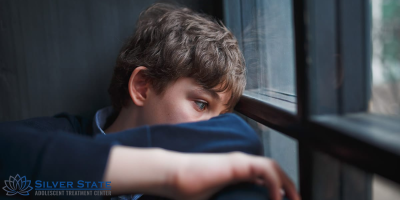Youth Residential Treatment Centers Help Teens Abusing Peyote in Fringe Groups

Table of Contents
Key Takeaways:
- abuse in fringe teen subcultures is a big problem that youth residential treatment centers help solve.
- Teenagers who use peyote in a cultural or fringe way need personalized therapy and addiction support.
- Combining medical, psychological, and family-based approaches improves the results of recovery.
- Working with culturally aware care and trauma-informed strategies makes people more likely to get involved.
- Access to residential treatment centers for youth and Las Vegas Youth Center services helps ensure timely intervention.
Introduction
Young people often use drugs with experimental or fringe groups without fully understanding the risks. Teenagers who abuse peyote, especially those who fringe groups, can get specialized recovery support at youth residential treatment centers. These centers offer a safe and structured environment.
These centers use therapy, medicine, and education to help teens with both their substance use and the problems that caused it, giving them a way out of harmful habits. They work on building emotional strength, coping skills, and healthy relationships with peers.
How Can Teens Who Abuse Peyote In Fringe Groups Get Better By Being In A Youth Residential Treatment Center?
Teenagers who use peyote in fringe groups often say they do it for spiritual or peer pressure reasons. Still, many of them have symptoms of substance use disorder, such as hallucinations, changes in behavior, anxiety, and social isolation. Mescaline, the hallucinogenic substance in peyote, can cause dangerous episodes even in people who have never used it before, as observed by the DEA.
Youth residential treatment centers provide daily therapeutic activities, group therapy, medical supervision, and one-on-one therapy. In a supervised setting, teens learn how to deal with cravings, triggers, and stressors in a safe environment where they are not at risk of being influenced by bad peers.

What Kinds Of Help Do Teens Who Abuse Peyote Get In Residential Treatment?
Cognitive-behavioral therapy (CBT), motivational interviewing, and family therapy are examples of evidence-based interventions that are often used in residential programs. Medical oversight makes sure that physical and mental health problems are monitored safely. A psychiatric evaluation can help find co-occurring disorders and suggest possible Teen Medication Treatment options when they are needed.
Therapists also teach people how to avoid relapsing, control their emotions, and make friends healthily. Teens get an immersion experience that helps them live drug-free, rebuild relationships, and deal with things that make them want to use drugs again.
What Makes Las Vegas Youth Center Stand Out For Residential Treatment For Teens?
Programs in Las Vegas and other places like it focus on a holistic continuum that includes clinical care, educational services, recreational therapy, and support that is sensitive to different cultures. These residential treatment centers for youth and Las Vegas youth center services offer licensed therapists, personalized care plans, and help after treatment.
These centers work with schools and communities to ensure that students continue to make progress in school while they are in treatment. This keeps learning and peer support networks from being disrupted, as suggested by SAMHSA.

Why Is It Important To Take Into Account Cultural Background And Trauma When Treating Teens Who Abuse Peyote?
Teen peyote abuse often starts with fringe group rituals or a desire to explore spirituality. Effective centers teach people about different cultures and how to tell the difference between ceremonial use and misuse. The treatment is based on trauma to help people who have had bad experiences in the past or who have dysfunctional families that may have led them to try drugs.
By tailoring care to each teen’s unique background and beliefs, this method builds trust, lowers shame, and supports long-term recovery.
How Does The Hidden Language Of Drug-Seeking Patients Fit Into Recovery?
Teaching teens about the neurobiology and dangers of Peyote and mescaline as part of their therapy helps them understand the risk of addiction.Teen Residential Treatment modules teach teens how to deal with problems, plan for relapses, and follow daily routines. Counseling teams may also use information from resources like The Hidden Language of Drug-Seeking Patients to learn more about the reasons behind youth substance use and the subtle behavioral cues that go along with it.
By understanding how people communicate in small ways, staff can respond in the right way, calm down crises, and build emotional trust.
Conclusion
A comprehensive, structured approach is needed for teens who abuse peyotein fringe groups to get better. Youth residential treatment centers offer a coordinated mix of psychological therapy, medical help, peer support, and cultural sensitivity to help people stop using drugs and alcohol. These programs help teens get their lives back by making them stronger, healthier, and more secure in who they are
These kinds of centers give people hope for long-term recovery and personal growth by helping them with both substance abuse and underlying mental health problems. If your teen is having a hard time, you might want to call Silver State Adolescent today.
Call Silver State Adolescent at Tel: 725.525.9897 for help with enrollment and intake.
FAQs:
1. What is peyote, and why do teens use it inappropriately?
Peyote is a cactus that has mescaline in it, which is a strong hallucinogen. Teens might abuse it to change how they see things, fit in with their friends, or for fringe spiritual reasons, even though it is bad for their mental and physical health.
2. How do residential treatment centers for teens help people who are addicted to peyote?
They offer round-the-clock supervision, individualized therapy, medical monitoring, and education that focuses on cravings and triggers in a structured, drug-free setting.
3. Is it possible to treat teens who use peyote with medicine?
Yes. Teen Medication Treatment may be used under close clinical supervision when mood or anxiety disorders occur at the same time.
4. How important is being culturally sensitive in treatment?
It’s important to know the difference between ceremonial use and misuse. Trauma-informed and culturally aware care helps people trust each other and lowers the stigma around recovery.
5. What comes after residential treatment for long-term recovery?
Outpatient therapy, peer support groups, educational reintegration, family involvement, and planning for preventing relapse are all important parts of good aftercare.
Citations:
Substance Abuse and Mental Health Services Administration.Key Substance Use and Mental Health Indicators in the United States: Results from the 2021 National Survey on Drug Use and Health. U.S. Department of Health and Human Services, 2022, https://www.samhsa.gov/data/report/2021-nsduh-annual-national-report.
Fickenscher, Alexandra, et al. Illicit Peyote Use Among American Indian Adolescents in Substance Abuse Treatment: A Preliminary Investigation.Substance Use & Misuse, vol. 41, no. 8, 2006, pp. 1139‑1154. National Criminal Justice Reference Service, https://www.ojp.gov/ncjrs/virtual-library/abstracts/illicit-peyote-use-among-american-indian-adolescents-substance.
“Drug Fact Sheet: Peyote and Mescaline.” DEA, U.S. Department of Justice, June 2020, https://www.dea.gov/sites/default/files/2020-06/Peyote%20and%20Mescaline-2020_0.pdf.

